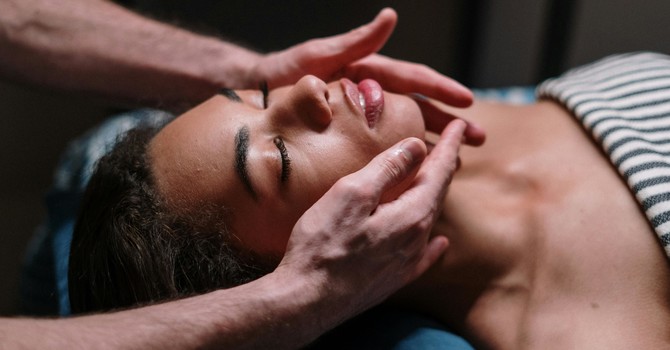
Are you one of the millions of people who spend hours of their day at a desk? If so, read on for 5 Healthy Habits To Adopt From Your Desk!

1. Posture
What is the best posture for sitting at a desk? As you read that, did you hear your moms voice pop into the back of your mind telling you to sit up straighter and put your shoulders back? Well, throw that information out the window. Sorry mom. Several new studies have debunked the theory that slouching causes low back pain. Instead, it is our sedentary lifestyles and lack of core strength that contribute to musculoskeletal related back pain. So go ahead and slouch occasionally! However, make sure you are changing that position at least hourly. Or better yet, get up and move around completely! Stretch your legs, move your arms, and give your eyes a break.
In addition to moving hourly, we can also practice proper core engagement while we sit at our desks. Did you know that you are technically supposed to engage your core while you sit? All day…8 hours a day…40 hours per week. Daunting, isn’t it? While there is a man in Australia who held a plank for 9 hours 30 minutes and 1 second in 2021, don’t be discouraged if your core stamina falls slightly short of that. That man is in the Guiness Book of world records and not sitting at a desk all day.
So what should you do if you want to sit with an engaged core for a small portion of your day?
Try this: Sit with your shoulders pulled back and your lower back arched as much as you comfortably can. Next, hollow out your body and slouch forward. Then, slowly move between these two positions until you feel your abs engage. Ultimately, you should end up in a position where your shoulders are lined up over your hips and your core is actively working.
Start by engaging your core for small portions of the day and relax when your muscles feel fatigued. The more often you practice this, the easier it will become and the longer you will be able to maintain activation.
2. Breathe With Purpose
Our breath is a powerful tool and with a little work you can learn to use your breath with purpose. There is a lot about our day that we cannot control. We can’t control that our inbox is full. We can’t control that the phone is ringing. We can’t control when electronics stop working. We can, however, control our breath. We can stop and use our breath at any point in the day and no one has any control over that except you.
Try this: To practice intentional breathing, start by sitting with your core engaged (see habit #1!). This position allows the diaphragm, a muscle essential for breathing, to be in an optimal working zone. If the shoulders are slumped or the back is arched, it can create a short, shallow breathing pattern. Inhale through your nose and imagine the breath filling your chest. As you exhale, imagine you can see the breath leaving your body. On your next inhale, send the breath deeper into the chest imagining that it fills the belly and as you exhale push it out completely from your body. Inhale again filling the chest, filling the belly and sending it into the hips. As you are seated, imagine that breath splitting to travel into each leg. As you exhale, pull that breath up and out of the body. On your next inhale fill through the chest, fill through the belly, fill into the hips, feel the breath split into each leg and travel into the tips of the toes. Hold that breath and let it envelope the whole body before exhaling.

3. Take A Break
If there is a project to finish and a deadline looming, how easy is it to just get to work and power through the whole day? We tune everything out and simply exist in our zone. It feels good to be productive, but our bodies were not designed to sit for 8 hours a day at a desk. We need to physically and mentally take a break.
Try this: Remove yourself completely from the work zone once per hour. As an extra bonus, if you can, go outside! Studies show that focus and productivity will improve after breaks. Understandably, not everyone has the luxury of popping outside for a breath of fresh air 8 times per day. You can still refresh your mental well-being with a few deep, purposeful breaths (see habit 2!).

4. Drink More Water
There is mixed research on the recommended daily water intake. Harvard gives one number, Mayo clinic gives another. But generally, most agree that it should be about 1/2oz per pound of body weight daily. For example, a woman weighing 140lbs should have at least 70oz or about 9 cups of water daily. And that is your STARTING point. If it’s hot out or you are really active, that number should actually increase.
Try this: One way to practice taking breaks from the workspace while also drinking plenty of water, is to keep a small cup at your desk. As it runs out, force yourself to get up and refill it!
5. Stretch From Your Desk
Here are a few of our favorite stretches that you can do right from your desk!
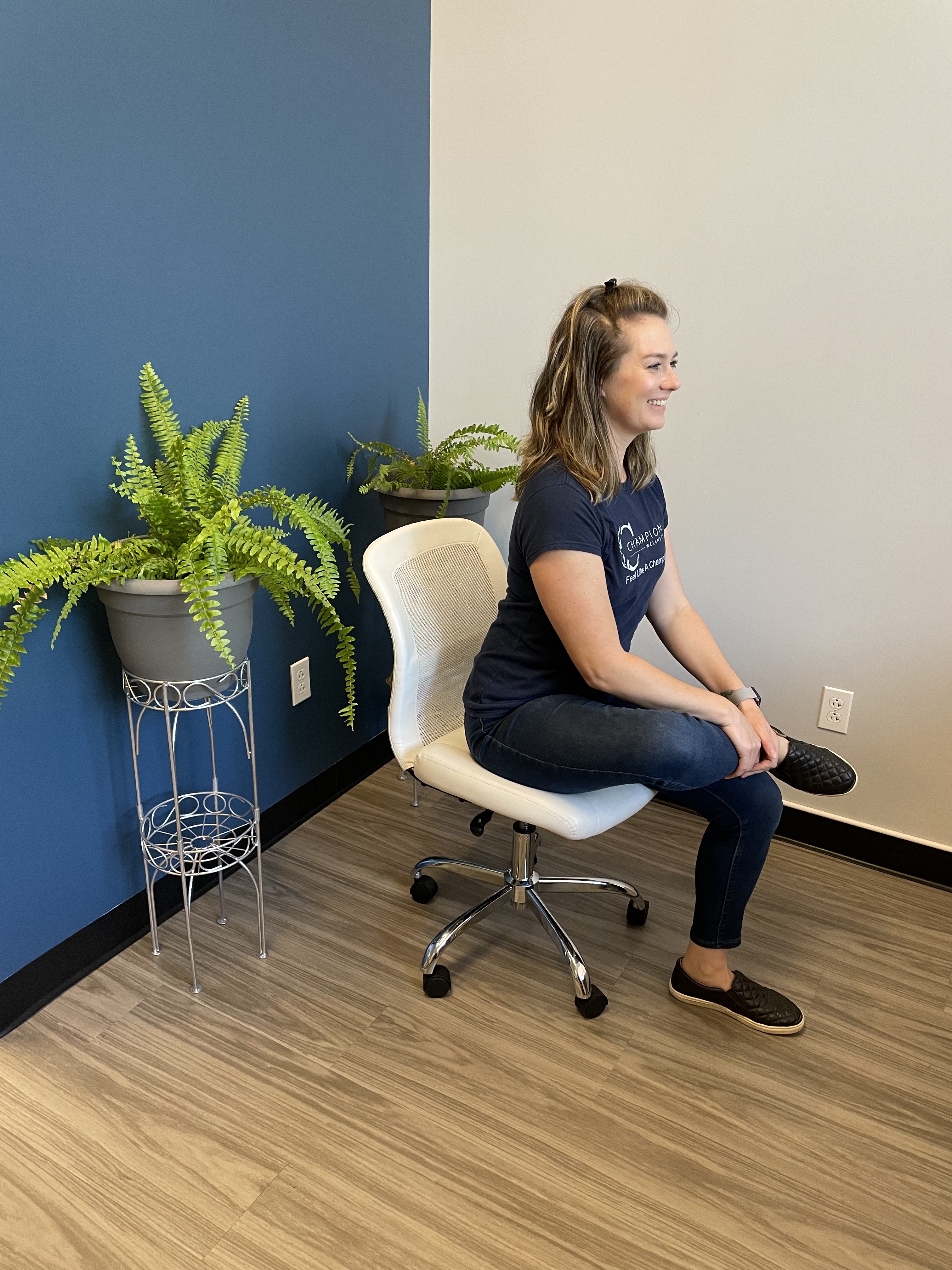
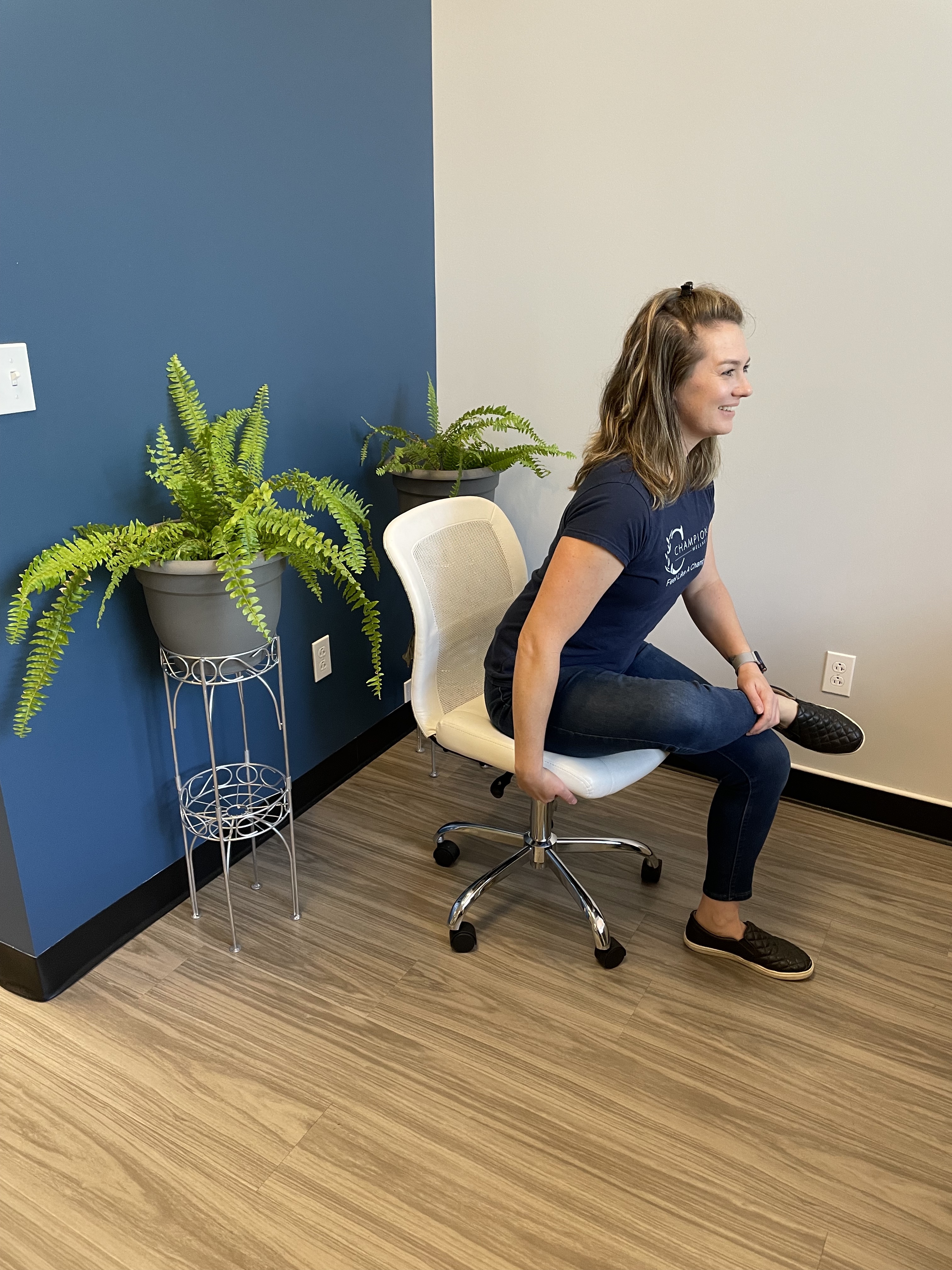
Figure 4 Stretch
- Cross your right knee over your left ankle. Keep your back straight with your head up and lean forward into the stretch.
- Hold for 30 seconds and repeat on the other side.
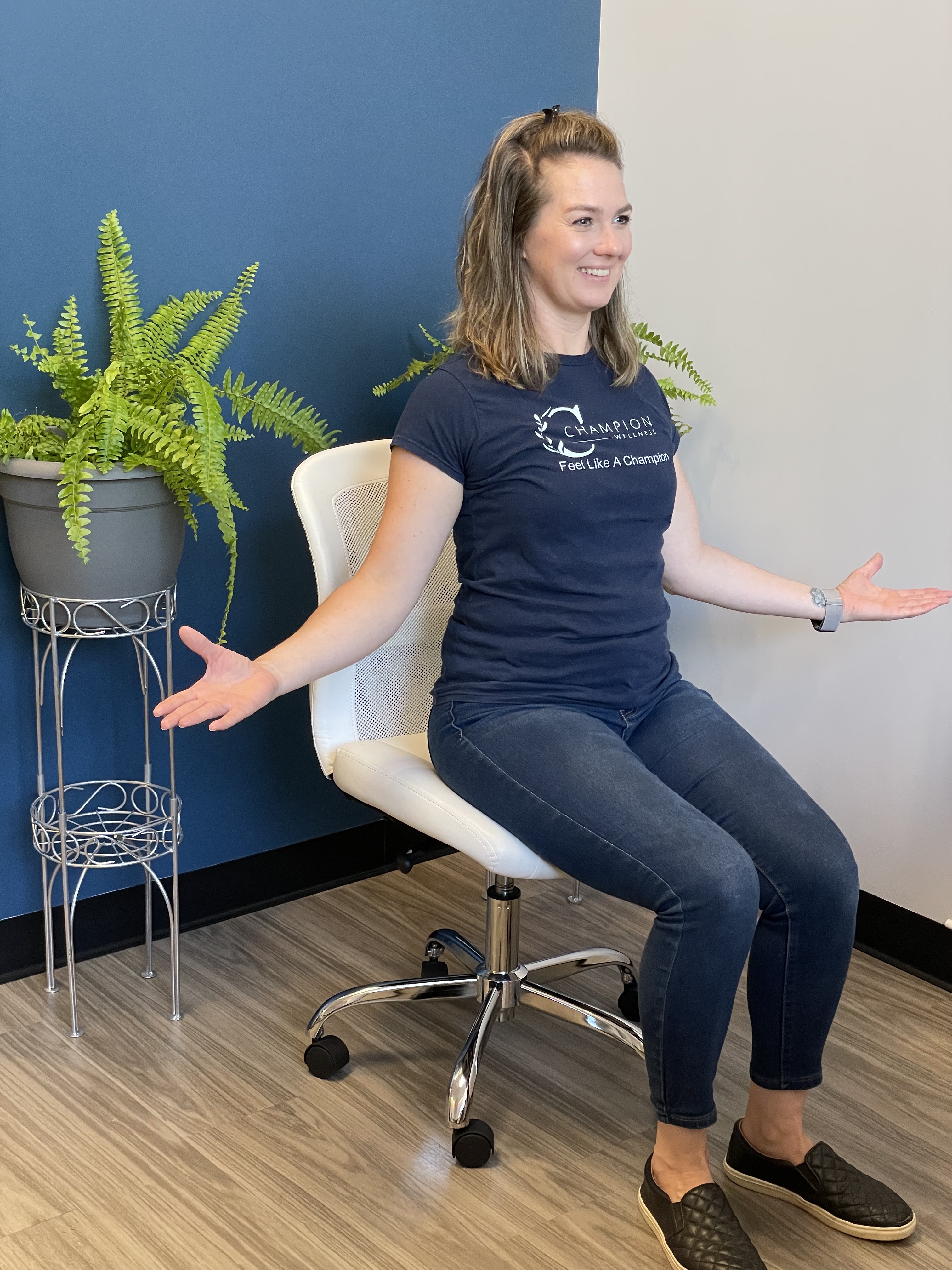
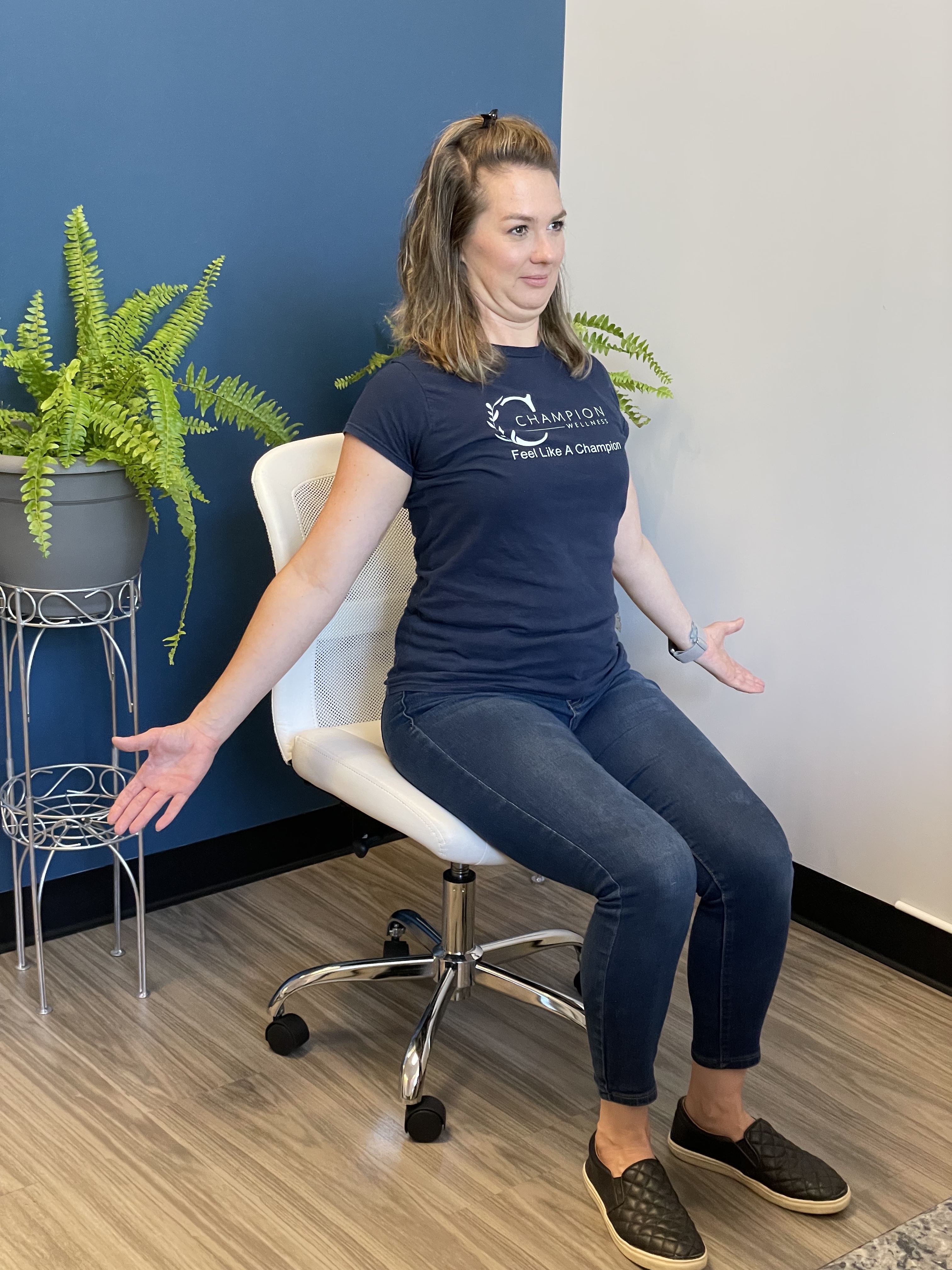
Open Book Stretch
- Sit in your activated core position with your palms facing the ceiling.
- Keep your elbows pinned to your sides and open your hands like a book while squeezing the shoulder-blades together. You should feel a stretch through the front of your chest. [Option to straighten the arms.]
- Draw your head straight back to give yourself a double chin. Imagine there is a string directly behind your head pulling you.
- Hold for 30 seconds and repeat 2 more times.
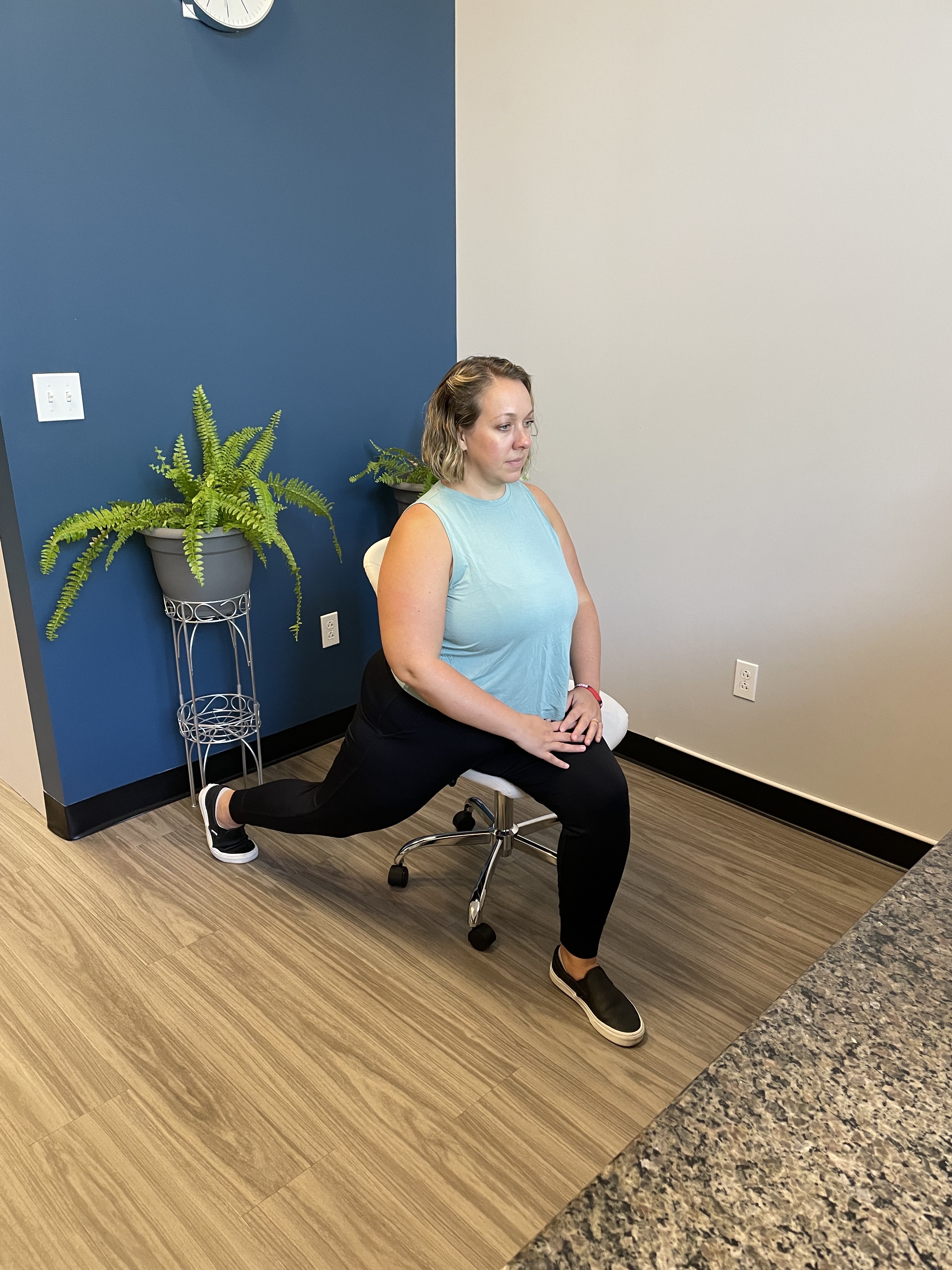
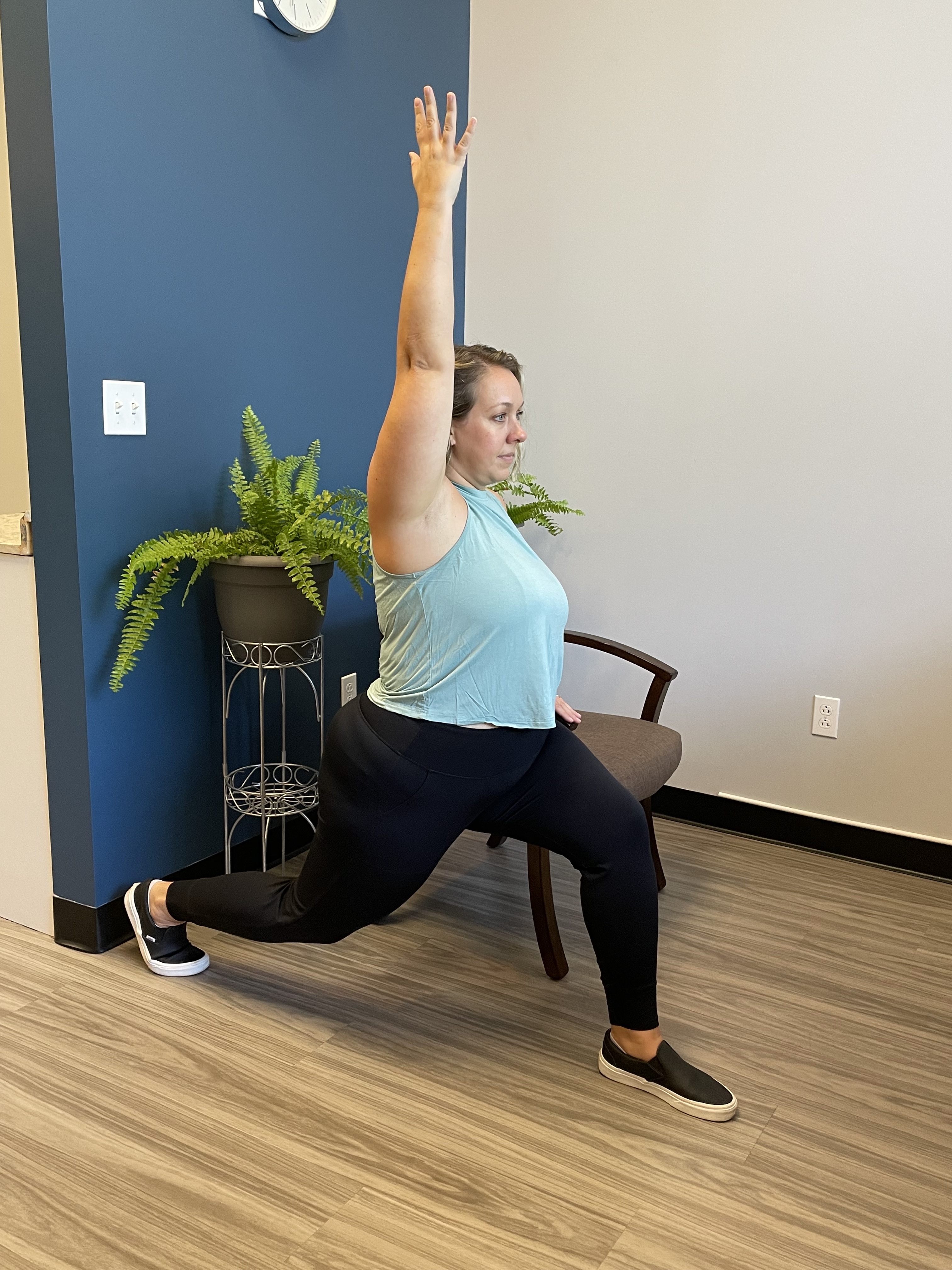
Hip Flexor Lunge
- If you have an armless chair, simply slide to the right side so only the left half of your body is supported.
- Extend your right leg back similar to a lunge position. Optionally, you can reach your right arm straight up, or both arms up into a cactus-like position.
- Hold for 1 min and repeat on the other side.
- If you have a chair with arms, stand next to your chair in a similar lunge position while using the chair for support. This stretch can also be performed while holding on to the desk.

Neck Stretch with Deep Breathing
- This stretch utilizes purposeful breathing (see above). Start by leaning the right ear towards the right shoulder and hold for one deep inhale and exhale.
- Slowly roll the head back to look upwards and again hold for one deep inhale and exhale. Be mindful that your head does not collapse onto your back or the back of your chair. Don’t sink into your shoulders.
- Gently roll the left ear towards the left shoulder for a deep, intentional breath.
- Glide the head forward to look down for one last deep breath.
- Repeat this process by changing directions and starting on the left side.
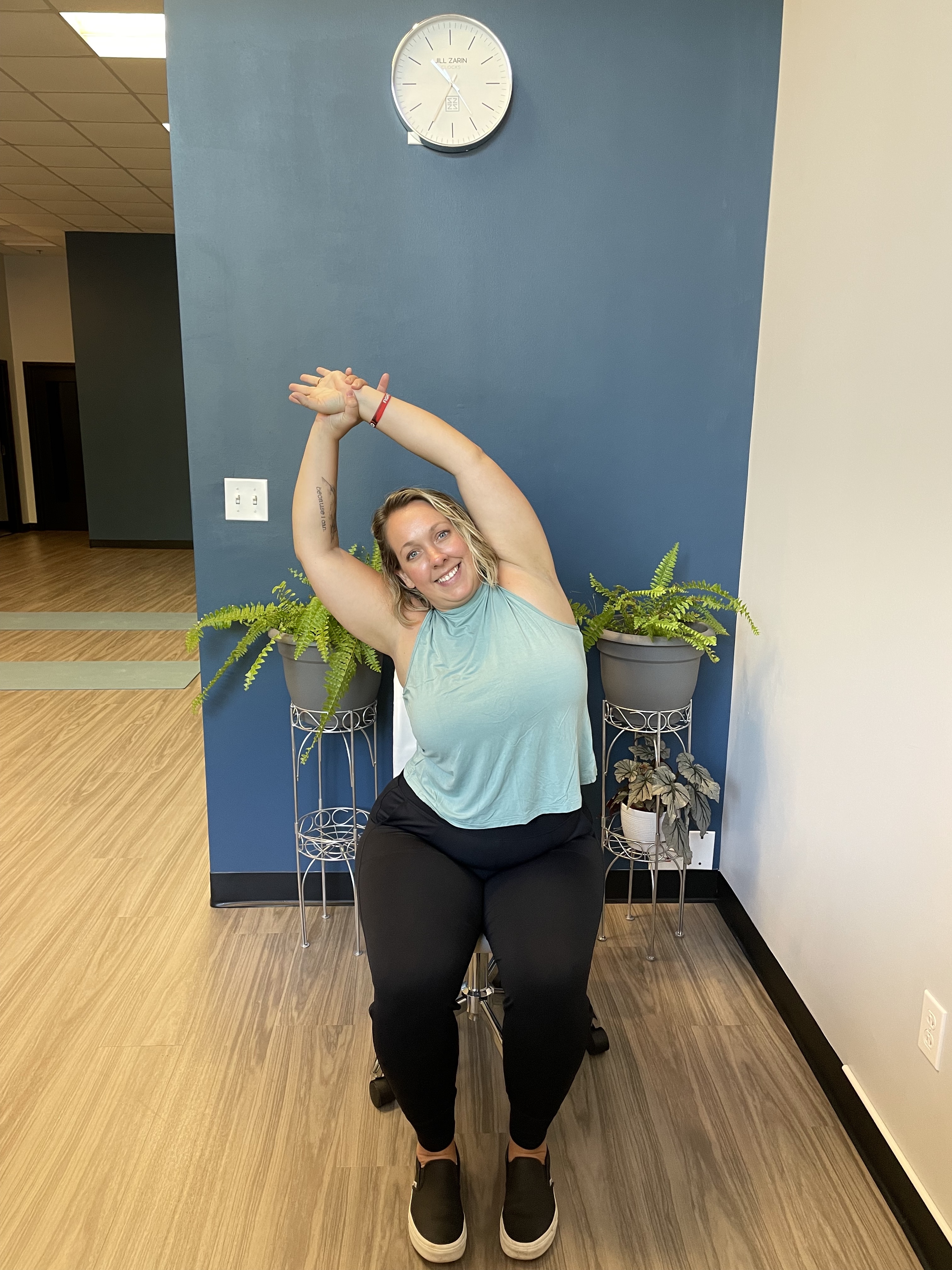
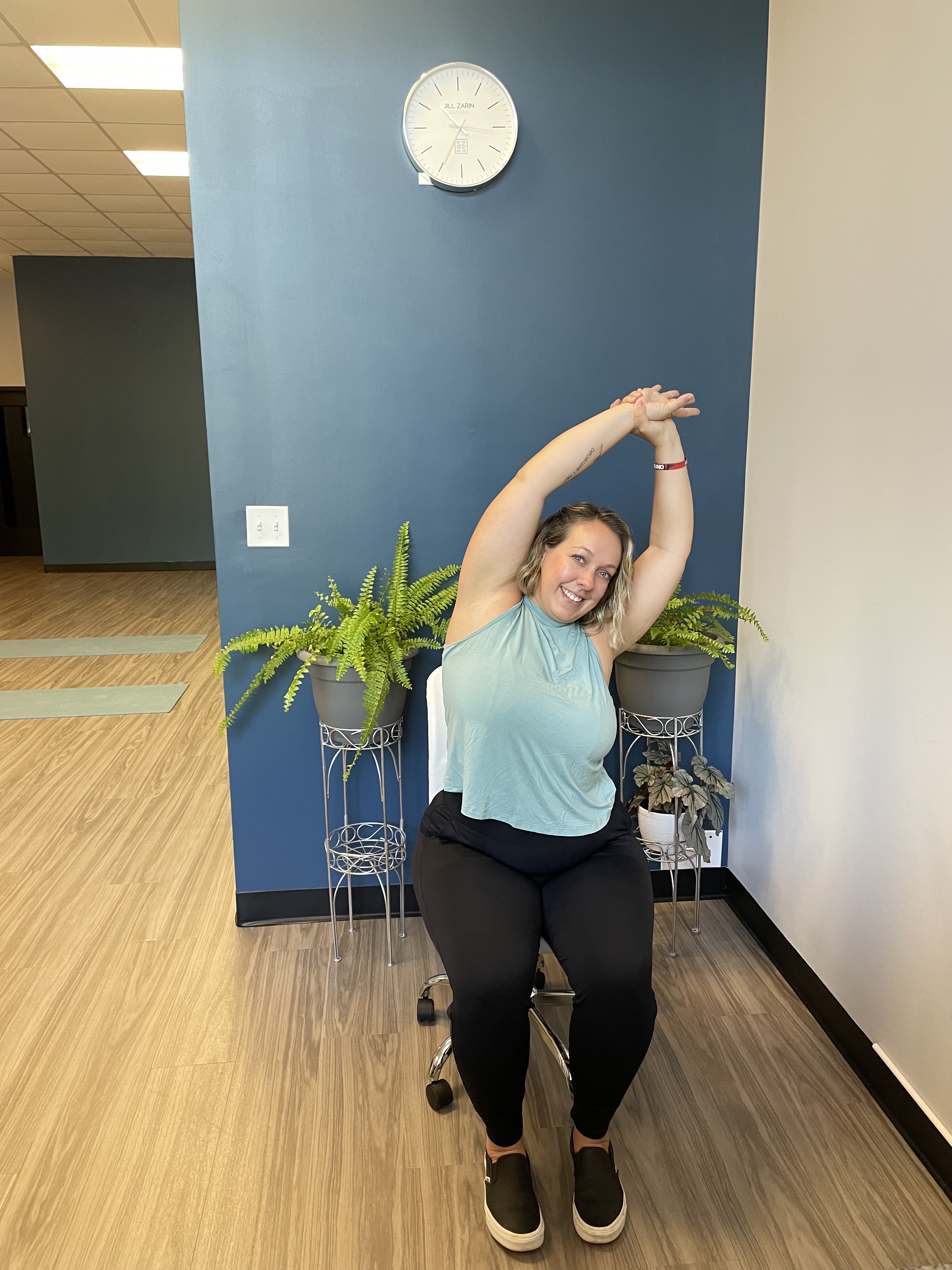
Wrist Stretch
- Sit with your activated core position. Wrap your left 2nd or 3rd fingers around the back of your right wrist and your left thumb around the underside. Your fingers should look similar to the ‘ok’ or pinch position.
- Reach both arms straight up over your head. Both palms should be facing front.
- Gently lean to your left side while your left hand pulls your right wrist up and away from your body. Hold this position for 2 purposeful breaths.
- With the hands in the same configuration, lean to the right for 2 breaths.
- Switch your hands and wrap the right fingers around the left wrist. Repeat the same motions.
While we may have very little control over how much time we spend at a desk or even which desk we sit at, there are measures we can take to improve that time spent. We hope these 5 simple tips bring you peace of mind throughout your day.
Namaste,
This blog was an excerpt from a Masterclass presentation for The Women's Collaborative. For the full video, click HERE!
*This content is not medical advice nor a treatment plan and is intended for general education and demonstration purposes only. This content should not be used to self-diagnose or self-treat any health, medical, or physical condition. Don’t use this content to avoid going to your own healthcare professional or to replace the advice they give you. Consult with your healthcare professional before doing anything contained in this content.
Dr. Heather Champion
Contact Me